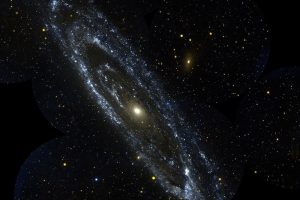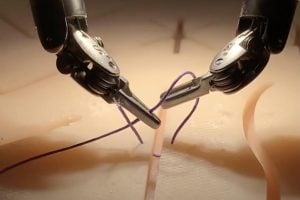
Space@Hopkins, led by Bloomberg Distinguished Professor Charles Bennett, enables space research across the university’s divisions by awarding seed grants that can be used to support research teams while they generate preliminary results that will help them secure external funding. In particular, the seed grant program aims to foster interdisciplinary collaborations across the university and provide research opportunities for undergraduates.
“As America’s first research institution with a long history in space research, Johns Hopkins is strategically positioned to create critical interdisciplinary approaches to space exploration,” Bennett says. “This year, we are proud to fund projects that unite the health sciences with space science, physics and astronomy with archaeology, applied physics with biomedical innovations, and more. Through these grants, we are creating new avenues of innovation and training the next generation of space scientists in the process.”
Projects with ties to the Whiting School include:
Detecting archaeological sites and raw material sources in satellite imagery
Principal investigator: Michael Harrower, assistant professor of archaeology
Archaeologists have long considered trade to be one of the primary influencers in the development of some of the world’s earliest complex societies, but scientists have yet to determine where valuable raw materials were naturally available in the ancient world and where those materials were processed and consumed.
“New forms of satellite imagery and processing technologies now hold great promise for mapping raw material sources and the ancient villages, towns, and cities that used them,” the team’s proposal says.
Harrower will lead a team that includes three undergraduate students and co-investigators Daniel Viete and Benjamin Zaitchek, both from the Department of Earth and Planetary Sciences; Brice Menard from the Department of Physics and Astronomy; and Carey Priebe from the Department of Applied Mathematics and Statistics.
Predicting planetary magnetic field reversals
Principal Investigator: Sabine Stanley, a Bloomberg Distinguished Professor and expert in planetary physics
Magnetic fields are generated in a planet’s deep interior and extend beyond the surface where they are observable by spacecraft, making them important probes of planetary interior structure and dynamics. Investigations of magnetic fields can provide information on the thermal state, composition, and dynamics of planetary cores, as well as information on a planet’s history, including past plate motions, polar wander, and thermal evolution.
“We are therefore proposing a new approach to investigating planetary magnetic field reversals,” their proposal says. “This method will rely on using image recognition tools and machine learning algorithms to look for features in the observed magnetic field morphology that signify an impending reversal.”
The team includes co-investigator Chris Baumgart, principal professional staff at the Applied Physics Laboratory and a faculty member in the Whiting School’s Engineering for Professionals program, and undergraduate Sydney Timmerman.
Highest density tactomorphic sensors for space (suits and robots)
Principal Investigator: Nitish Thakor, professor of biomedical engineering
Touch is needed by humans and robots in space exploration, but the limitations of available technology and the requirement of space suits make touch impossible in some situations. This project aims to develop improved touch sensors and prosthetics that give astronauts and robots alike the ability to touch and grasp. The team includes co-investigator Ralph Etienne-Cummings and undergraduates Harrison Nguyen and Jonathan Fu.


